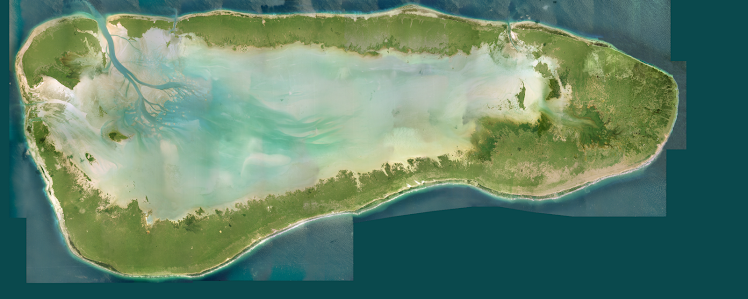The huts at the camp sites are nothing more than a couple of sink plates nailed to a wooden frame, in the middle of nowhere. The more weather-beaten huts would fit in well amongst a stand in the Cape Flats (South African shanty town). Water is collected by guiding rain from the roof to rain gutters, and finally into containers. The floor is the ground. The beds are rickety bunk beds. The food cupboard is the rat and cockroach hotel. Showers are obviously open air, using a scoop. The light: the moon, candle or a torch. Toilets, are nearby bushes, everyone gets to dibs one. Washing basin: some washed out flotsam containers, that are cut in half. Dinner: most likely canned meat and rice; this features every meal during camp. Important to bring with you: mosquito net and repellent, suncream, water bottle, your field notebook and measuring equipment, and a stomach of steel.
At most of the camps we patrol designated beaches to count green turtle tracks, and nests. We do the monitoring first thing in the morning so that the tracks are fresh as possible, and minimal tracks have been washed away by the tide. Sometimes we are lucky to find a turtle that is still busy nesting, or returning to the ocean. When we find one that is still on terra firma, we attach metal tags with unique ID numbers to the flippers. We then take several measurements of shell and track size and note any damage caused by disease, boats or perhaps sharks, and of course whether or not the nesting was successful.

During the last camp I was sleeping outside, since I decided that the stars are a better roof than the corrugated iron sheets when it is not raining. After awaking and finding my way out of the mosquito net, I heard that flapping of sand as a female green turtle was closing her nest nearby. This was well before normal monitoring trips set off, but I could not miss out on the opportunity to tag this turtle after the fruitless attempt from the night before, when we were waiting until 23:00, but no turtles emerged. Tessa, a fellow volunteer and friend and I quickly made our way to the mother turtle in the pink early morning light. Tagging and measuring her was painless, other than the mosquitoes who seized the moment to get some fresh warm blood, and we were left to enjoy her triumphantly complete an all important phase of her life-cycle, as she struggled back to the water. She had done it: She deposited her approximately 100 eggs on the beach were she may have hatched 20 or more years earlier. Studies suggest that green turtles display great natal-philopatry (the behaviour to go back to the beach where they were first hatched from). It is one of the fantastic mysteries of life: How do they find their way through the enormous ocean to the same beach they were hatched from? Although we could not be sure that this was indeed the case with this green turtle, I would like to think so. This is one the on going studies to which tagging the turtles contribute: When this turtle emerges on land again, someone might report the tag numbers the next time that the turtle is seen. The tag numbers can then be retraced to an international database which allows us to see where the turtle has laid eggs before. We had our cameras nearby, and were able to capture the moment. What a way to start the day!
.


